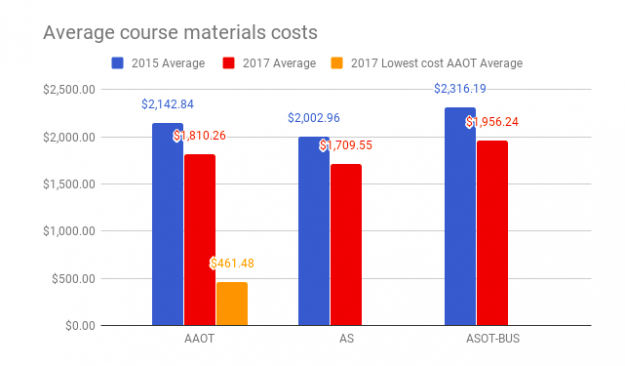Textbook savings add momentum to Oregon higher ed OER program

The results are in: Two years after implementing an open educational resources (OER) initiative for Oregon’s 17 community colleges, students in three transfer degree programs spent 16 percent less on course materials, for a combined savings of more than $1 million.
“Where no-cost and low-cost course materials information is available in the course schedule, the lowest-cost degree pathway offers an extraordinary potential savings of 75 percent over the 2017 average materials cost,” the report detailing the study’s findings and methodology concluded. After new legislation passed last year, Oregon will be expanding its OER program to include the state’s seven public universities.
The report is “evidence that efforts to increase transparency for students about textbook costs … is working,” said Nicole Allen, director of open education at the Scholarly Publishing and Academic Resources Coalition (SPARC). “From my perspective, the most significant thing about this study is it looks at costs in a more holistic way, which is realistic for students.”
The richest part of OER is the ability of faculty to customize and update materials to meet their specific needs and student interests, said Allen, who was not involved with Oregon’s OER initiative. Over the past decade, textbook publishers have been moving to a variety of digital products, but part of their slowness to adapt stems from the fact that their materials weren’t designed for digital presentation — they’re actually just PDF files, she said.
“The model we’re seeing publishers move toward is short-term subscriptions rather than buying books, [because] the used book market undermines future sales,” Allen told EdScoop. “Remember the ‘Men in Black’ memory eraser? That’s the model the industry wants us to shift to … but information is becoming more available, rather than less.”
Amy Hofer, a coordinator of statewide open education library services at Oregon’s Linn-Benton Community College, conducted the baseline study of materials costs in 2015 and devised the follow-on study to identify savings.
“There’s a lot of data showing that students don’t purchase the materials they need because they can’t afford them,” which affects their academic performance, Hofer said.
“There shouldn’t be a difference between what students are told to spend and what they actually spend, but they do because the [textbook] market is broken,” Allen said. “When we think about the whole picture of college costs and the expenses that we can tackle, textbooks is one that we actually can tackle.”
Hofer said some high schools in the state offering accelerated learning programs for students earning college credits got awards to use OER. “In that case, it’s not the individual students that save money but the school districts,” she said.
As OER resources spread into new levels of Oregon’s educational system, Hofer’s job may expand.
“It’s not a done deal, but it’s looking likely,” she said. “It creates a lot more opportunities to have those conversations and look for ways to collaborate.”




